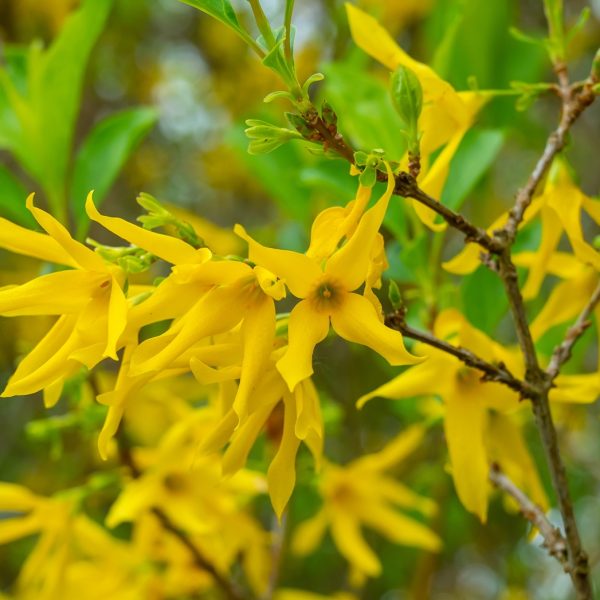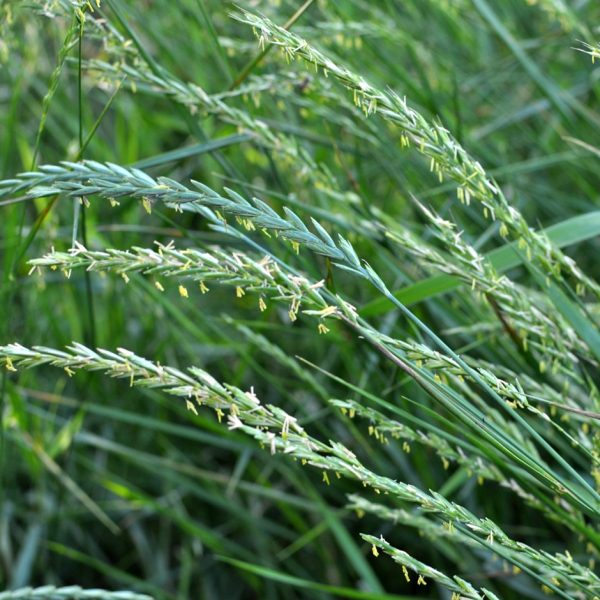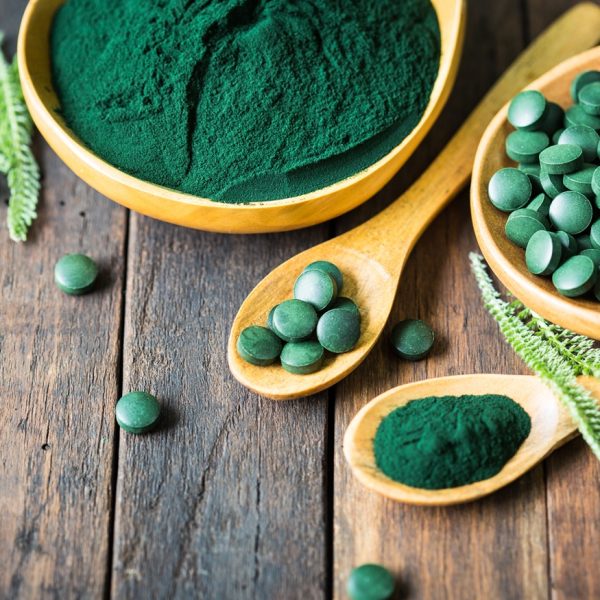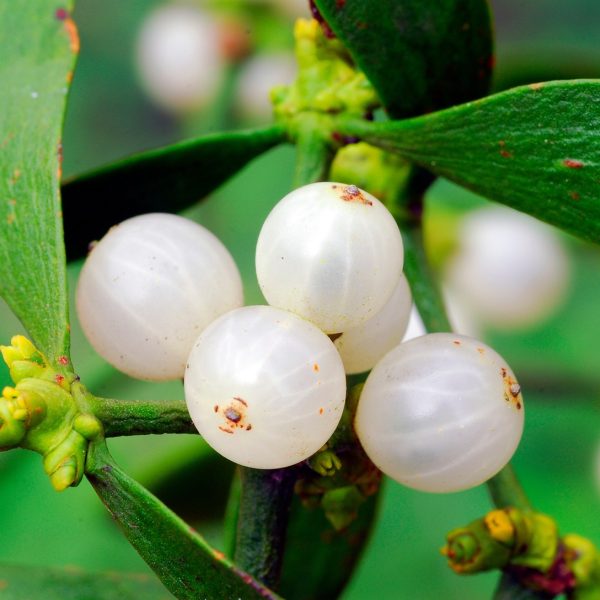-
How does it feel?
A decoction of birch polypore smells inviting as it simmers, giving off a strong mushroom aroma, which is earthy and savoury. This mushroom aroma extends to an umami flavour, but the taste is dominated by the bitterness, which is the initial sensation to reach the mouth. This leaves a slightly acrid/sour taste, which is quickly replaced by an umami and earthy aftertaste which lingers on the tongue.
A dual extract tincture is also intensely bitter, with a milder umami flavour and a slight sweetness. The bitterness feels invigorating and mildly energising to the body and mind. It feels nourishing and filling as it reaches the stomach and moves through the intestines.
-
What can I use it for?

Birch polypore (Fomitopsis betulina) Birch polypore is strengthening for the immune system, calming, and can be used to address gastrointestinal issues (1). It can be added to cold and flu remedies to support the immune system (see Recipe). Birch polypore is antimicrobial against a broad range of bacteria, fungal organisms and parasites, and can be used to support intestinal infections and worms. Contemporary research confirms the benefits of birch polypore and pharmacological studies provide evidence of antibacterial, antiparasitic, antiviral, anti-inflammatory, cytotoxic (anti-cancer), neuroprotective, and immunomodulating activity (2).
Birch polypore is not an edible mushroom as it remains tough and rubbery even after cooking. The very young fruiting body is considered by some to be edible, though others reflect that even after thorough cooking it remains bitter and unpalatable (1,3). The fruiting body needs to be processed as a decoction or alcohol extract for medicinal use.
Birch polypore contains a high concentration (up to 52%) of beta glucans (1). These compounds are poorly extracted in alcohol, requiring a water extraction method (1). However, many of the active constituents (triterpenoids and non-water soluble monosaccharides) require alcohol extraction (4). Therefore, birch polypore is best as a dual extraction to capture the full range of constituents (1). When using birch polypore to make a decoction or tincture it is best to grind into a powder to increase the surface area for extraction of the active compounds. Fresh or dried polypores are tough to chop up or blend, so it is better to cover in boiling water and leave to soak until the water is cool enough for blending. It is important to remember that in order to access the beta-glucans in the mushroom cell wall they must be heated before consuming, simply grinding the raw mushroom into a powder will not be sufficient (1). To make a decoction, add water and simmer for an hour (see dosage for more information).
Whole mushroom crude extracts, rather than products containing individual isolated constituents, often show greater bioactivity due to the synergy between the individual compounds in the extract (2). For a detailed outline of how to create your own extracts Medicinal Mushrooms by Christopher Hobbs is an excellent recommended resource (1).
A plaster can be made from the surface of a birch polypore and used as a wound dressing by cutting the shape required and peeling back the surface before applying to the skin (3). This is effective for bleeding or seeping wounds by making use of the absorptive surface, as well as being antibacterial and anti-inflammatory. The powdered mushroom can be added to a cream or balm used to treat skin infections and also acts as a painkiller (2). The potential for promoting wound healing has been demonstrated by modern research (5).
-
Into the heart of birch polypore

Birch polypore (Fomitopsis betulina) The main constituents in birch polypore are beta glucans, triterpenes, phenolic acids and non-water soluble monosaccharides (4). The immune-enhancing and immune-modulating activity is largely due to the polysaccharides, namely the beta-glucans which make up around 52% of the mushroom (2,4). A large portion of the reported biological activities is also closely linked to the triterpenoids, which have been shown to be responsible for its anti-inflammatory, cytotoxic, antimicrobial, antioxidant and antithrombin activity (4). The triterpenes, betulin and betulinic acid, have a wide range of biological activities including anticancer, anti-inflammatory and antiviral actions (6).
The phenolic acids in both the fruiting body and the mycelium have been shown to have antioxidant, antibacterial, antiviral, antifungal and anti-inflammatory activity (7). Birch polypore extracts from both the mycelium and the fruiting body have exhibited significant cytotoxic activity against cancer cells, specifically prostate cancer cells and melanoma (7).
Piptamine, an alkaloid isolated from birch polypore, has antimicrobial activity against bacteria, fungi and yeasts including Candida albicans (2,4). The antioxidant activities of birch polypore are attributed to the flavonoids, however, their quantity in the fruiting bodies and the impact on free radical scavenging is considered to be low (4).
Birch polypore contains resins and the active compound, agaric acid, which have powerful purgative and laxative effects, which can result in a strong, though short-lived, bout of diarrhoea at high doses (8). Agaric acid is antiparasitic and antimicrobial against a range of mycobacteria (8).
In indigenous cultures, medicinal and spiritual applications are not clearly distinguished between. Polypore mushrooms have been of high symbolic value since ancient times with positive and negative meanings, and a strong impact on human culture including art, literature and folklore (4).
-
Traditional uses

Birch polypore (Fomitopsis betulina) There is evidence that birch polypore was used medicinally in Europe 5300 years ago (3300 BC), after a walnut sized piece of the mushroom was found with the remains of an Italian/Austrian Iceman in the Alps (9). It is known from modern research that birch polypore contains constituents that act as an antibiotic against a range of organisms and have a purgative effect on the intestines (9). Since the iceman had whipworm eggs in his guts, it was concluded that he was using the mushroom for healing purposes, as a laxative and antibiotic (8,9). More recently, strips of the fruiting bodies have been used externally as a styptic and antiseptic (1).
The fruiting bodies of birch polypore have a long history of use in folk medicine as an antimicrobial and to accelerate wound healing, as well as being used as a laxative and supportive medicine for stomach disorders (7). Birch polypore has a history of use in Russia as a soothing tea to enhance the immune system and reduce fatigue, and in Siberia, the Baltic area, and Finland, it was also used for the treatment of various types of cancer (4). In Poland, birch polypore extracts were given orally to female dogs with vaginal tumours, observed to completely disappear after five weeks (4).
Polypore mushrooms are included in the pharmacopeia and medicine of indigenous people worldwide, as well as being used in various ways as food and tinder (4). Due to the tough and perennial fruiting bodies, polypore mushrooms were often considered to be a source of eternal strength and wisdom (4). A powder produced from birch polypore was used as a snuff in Austria, and in Northern America and Siberia, this snuff was used as a pain reliever (4).
-
Traditional actions
Herbal actions describe therapeutic changes that occur in the body in response to taking a herb. These actions are used to express how a herb physiologically influences cells, tissues, organs or systems. Clinical observations are traditionally what have defined these actions: an increase in urine output, diuretic; improved wound healing, vulnerary; or a reduction in fever, antipyretic. These descriptors too have become a means to group herbs by their effects on the body — herbs with a nervine action have become the nervines, herbs with a bitter action are the bitters. Recognising herbs as members of these groups provides a preliminary familiarity with their mechanisms from which to then develop an understanding of their affinities and nuance and discern their clinical significance.
-
Traditional energetic actions
Herbal energetics are the descriptions Herbalists have given to plants, mushrooms, lichens, foods, and some minerals based on the direct experience of how they taste, feel, and work in the body. All traditional health systems use these principles to explain how the environment we live in and absorb, impacts our health. Find out more about traditional energetic actions in our article “An introduction to herbal energetics“.
-
What practitioners say
 Immune system
Immune systemIt is the beta-glucans in medicinal mushrooms which are largely responsible for overall immune modulation, by activating innate immune cells such as macrophages, dendritic cells, granulocytes and natural killer cells (1,6). For the prevention and treatment of acute illness and infections, it is the individual’s immune system response to the pathogen which is key (1). Therefore, mushrooms with the highest beta-glucan content will support overall immune system health and be most beneficial. One of the main strengths of birch polypore is its ability to prevent and treat infections, due to both the immune modulation and the specific antiviral and antimicrobial effect (1).
Prophylactic treatment, taken ahead of a potential infection can support the immune system and protect against bacterial and viral infections, such as seasonal influenza (1). Birch polypore is ideal to take throughout the autumn and winter months to support the immune system through the cold and flu season. Beta-glucans are water soluble and most efficiently extracted into a decoction. However the triterpenes and other non-water soluble constituents require an alcohol extraction, so a dual extract is recommended to get the full range of medicinal benefits that birch polypore can offer.
The constituents in birch polypore have a beneficial effect on the chronic conditions of the immune system and overall health, via immune system modulation, anti-inflammatory and antioxidant activity. Beta-glucans support both the innate and adaptive immune systems by activating macrophages which then bind to tumour cells or invading pathogens, and stimulating the bone marrow to produce stem cells which can develop into various immune cells (1). The anti-inflammatory and antioxidant actions of the terpenes and phenolic compounds reduce oxidative damage and inflammation in the human body (7).
Inflammation and oxidative stress are at the core of many chronic diseases, and birch polypore reduces inflammation and neutralises free radicals to decrease oxidative stress. The anti-inflammatory action is achieved by inhibiting pro-inflammatory cytokines such as TNF-α, IL-6, and IL-1, and pro-inflammatory enzymes such as COX-2, leading to decreased inflammation (10). Free radical damage and oxidative stress is associated with many chronic illnesses, including cancers, cardiovascular diseases, impaired immune function, diabetes, degenerative processes related to aging, and degenerative diseases of the central nervous system (1).
 Cancer
CancerThe potential anti-cancer and cytotoxic properties of birch polypore have gained most of the research attention in recent studies (10). Beta-glucans stimulate the bone marrow to synthesise more immune cells, which equips the body to deal with any potential cancerous invasions (11). The proliferation of cancer cells often results in an overactive immune response, however the immunomodulating properties of the beta-glucans help to regulate the immune response, to trigger a more appropriate immune response and specifically target any cancerous growths (11). There is laboratory research using human cell lines to support the use of birch polypore extracts as an adjunct to conventional cancer treatments, although clinical trials are required to confirm this. There is however a relative scarcity of information and research on birch polypore, particularly in comparison to other medicinal mushrooms such as chaga (Inonotus obliquus), reishi (Ganoderma lucidum) and turkey tail (Trametes versicolor), which highlights the need for more research to support any potential use in integrative oncology. Birch polypore and other medicinal mushrooms could be a valuable component of an integrative approach to cancer therapy, although treatment must be tailored to individual cases, and it is advisable to consult a specialist for personalised guidance. To read more, read our article, Mushrooms for Cancer Care.
Digestive system
Birch polypore is antimicrobial against a broad range of bacteria, fungal organisms and parasites, and can be used to support intestinal infections and worms. It has historically been used to expel parasitic worms from the digestive tract (8,9). Birch polypore can be used as an antiparasitic treatment for intestinal worms, in a formula including other herbs such as wormwood (Artemisia absinthium), gentian (Gentiana lutea), pennyroyal (Mentha pulegium), sage (Salvia officinalis), thyme (Thymus officinalis), mugwort (Artemisia vulgaris), yarrow (Achillea millefolium), aniseed (Pimpinella anisum), and calendula (Calendula officinalis)..
Safety note: Wormwood, sage, yarrow and mugwort all contain varying amounts of thujone and should not be used in children under 18 years of age unless under the guidance of a clinical herbalist).
-
Research

Birch polypore (Fomitopsis betulina) To date, there are no clinical trials and therefore a lack of clinical evidence to support the efficacy and safety of birch polypore. The indications for use are based on traditional use, in vitro research to determine the constituents, and the biological activity of these constituents. Further research is required to verify these biological activities in vivo and in clinical studies (2).
Chemical composition and biological activity of extracts from fruiting bodies and mycelial cultures of Fomitopsis betulina
This study compared the constituents in fruiting bodies and mycelial cultures of birch polypore. The total phenolic acid content was higher in the fruiting body than the mycelium. There was no difference in the triterpene compounds, however the indoles and sterols were higher in the fruiting body. The extracts were evaluated for their cytotoxic activity against selected human cancer cells and anti-inflammatory activity.
The mycelium extract exhibited significant cytotoxic activity against prostate cancer cells, while the fruiting body extract indicated a moderate effect on melanoma and prostate cancer. The authors concluded that biological activity of birch polypore extracts show cytotoxic and anti-inflammatory activities at different potencies, with the mycelial culture extract showing potential in supporting prostate cancer therapy, although further studies and clinical trials are required to confirm this (7).
Cytotoxic activity of Fomitopsis betulina against normal and cancer cells — a comprehensive literature review
A recent article reviewed the available evidence up to July 2024, regarding the cytotoxicity and anticancer activity of birch polypore. Out of the 450 articles screened, only five met the inclusion criteria required to assess the therapeutic potential properties of birch polypore. The analysed studies demonstrated that birch polypore extracts, particularly alcohol extracts, exhibited selective cytotoxicity against cancer cells (most strongly prostate cancer and melanoma cell lines) with minimal impact on healthy cells.
The authors identified that the triterpenes and glucans were consistently identified as the bioactive compounds responsible for these effects, specifically on prostate cancer, melanoma, and colorectal cancer cell lines. They concluded that these cytotoxic properties against cancer cells, with limited impact on healthy cells, is promising, although further research is needed to fully understand the mechanisms of action and the optimal extraction method and dose (10).
Chemical characterization and wound healing property of a β-D-glucan from edible mushroom Piptoporus betulinus
The wound-healing properties of birch polypore have been demonstrated in vitro. A hot water extraction method was used to isolate the β-glucan constituent from the fruiting body of birch polypore. The β-glucan promoted cell migration and wound closure on an in vitro scratch assay, demonstrating a potential wound healing capacity.
However, the extract showed no toxicity on human colon carcinoma cell lines, suggesting a whole extract or other constituents in birch polypore may be responsible for cytotoxic activity demonstrated in other studies. The authors concluded that the β-glucan is a promising agent for promoting wound healing and for inclusion in wound dressing material (5).
-
Did you know?
Birch polypore can be used for sharpening tools, hence one of its common names ‘Razorstrop fungus’ (12).
Additional information
-
Botanical description
Birch polypore is a leathery bracket fungus that only grows on birch trees, the Latin name, Fomitopsis betulina, deriving from the Latin name for birch, Betula (1,12). The fruiting bodies are annual, with a new crop each year along the trunk or birch trees (1). It has a rounded or hoof-shaped, smooth, white or pale brown coloured cap, which grows to between 5–30 cm in diameter and 2–6 cm thick (3,12,13).
The upper surface is smooth with a thin, separable skin from the white, rubbery flesh beneath (13). The underside surface is initially white, turning light brown as the fruiting body ages, made up of circular pores (3–4 per mm) into tubules (1.5–5 mm) (3,13).
-
Common names
- Birch bracket
- Razor strop fungus
- Birch conk
-
Safety
There are currently no clinical studies confirming the safety of birch polypore in humans (10).
Birch polypore is a non-toxic mushroom, and considered to be safe to consume in medicinal preparations (1). Medicinal mushrooms, including the polypore family, have been used in Eastern medicine for thousands of years, and are safe to consume for extended periods of time (6). When taken in large doses, birch polypore may cause mild gastrointestinal upset, and it is advised to gradually increase the dose to check for sensitivity and individual tolerance (1,8).
When making a decoction, start with half a teaspoon of powder per cup, drinking one cup per day and build up to three cups per day (1). A little gastrointestinal discomfort can be mitigated by adding dry or fresh ginger to the decoction (1).
-
Interactions
None known, however, this is due to a lack of available evidence to the contrary.
Medicinal mushrooms are routinely taken alongside prescription drugs in China and Japan, with multiple clinical trials confirming enhanced treatment outcomes and reduced side effects in cancer care (6). However, when taking herbal medicines alongside other medications it is recommended to seek the guidance of a qualified medical herbalist (6,11).
-
Contraindications
Birch polypore may cause mild gastrointestinal upset, especially in those prone to digestive complaints (1).
A small number of people experience an allergic reaction to mushrooms, so medicinal mushrooms should be avoided in those with a confirmed or suspected mushroom allergy (6).
There is insufficient enough reliable information available to confirm the safety of birch polypore consumption during pregnancy. Given the lack of research, it is generally recommended to avoid use while pregnant or breastfeeding, or only under the guidance of a medical practitioner.
When taking herbal medicine in cases of chronic or complex illnesses, it is recommended to seek the guidance of a qualified medical herbalist (11).
-
Preparations
A detailed outline of these preparation processes can be found in Hobbs, 2020 (1).
- Water extract (decoction of dried or fresh)
- Tincture (hydroethanolic extract)
- Dual extraction tinctures (combining both water and ethanol extracts)
- Powdered mushroom
- Concentrated powder extract
- Capsules
-
Dosage
There is limited information available regarding the dosage of birch polypore, recommendations for power extract, tincture and duel extract are based on general guidelines for medicinal mushrooms.
- Infusion: ½ teaspoon dried mushroom powder per cup, 1–3 times per day (1)
- Decoction: One part dried mushroom to 10 parts water, simmer for one hour, drink 1–3 cups a day (1)
- Duel extract: 1–3 ml per day (1)
- Concentrated powder extract: 2–4 g, 1–3 times per day (1)
-
Plant parts used
Fruiting body (mushroom)
-
Constituents
- Terpenes: Triterpenes (betulin and betulinic acid, polyporic acid), sesquiterpenes (7)
- Polysaccharides: β-glucans (up to 52%), α-glucans (1,2)
- Monosaccharides (sugars): d-arabinitol, d-mannitol, α trehalose (2)
- Phenolics: Flavonoids, tannins, and phenolic acids (syringic, gallic) (2,7)
- Indole compounds: Tryptophan, 5-methyltryptamine (7)
- Sterols: Ergosterol, hexestrol, cholecalciferol (7)
- Fatty acids: Agaric acid, saturated (22% of total fat), unsaturated (oleic and linoleic acid) (2, 8)
- Other nutrients: Tocopherols (0.578 mg/100 g), ascorbic acid (87.5 mg/100 g); β-carotene and lycopene (2)
- Alkaloids: Piptamine (4)
It is important to consider that the constituents isolated from different parts of the birch polypore (fruit body, mycelium, or biomass-free growth medium) will differ in structure, composition, and physiological activity (4). The constituents will also vary depending on the geographical growing location (different habitats and environmental conditions), genetic differences between populations, and the extraction methods used (7).

-
Habitat
Birch polypore only grows on birch trees, mainly those that are dead or dying, and occasionally as a parasite of living trees (2,3). It grows all year around in woodlands, and is widespread and common in temperate areas of Europe (3). Distribution is mainly in the Northern Hemisphere, largely in Europe, and also in Northern America and Asia.
-
Sustainability

Not currently on risk lists but complete data may be missing on the status of the species. Read more in our sustainability guide. The Global Fungal Red List Initiative is part of the IUCN Red List of Threatened Species, focussing on assessing fungal species that may be at risk due to habitat loss, pollution, climate change, and other threats (18). Birch polypore has yet to be assessed and therefore the status is not reported by The International Union for Conservation of Nature (14) and it does not appear on any National Red lists or any global endangered species acts (14) .
Birch polypore is reported as “secure” by Nature Serve since it is relatively common and well distributed across North America, and does not appear on the U.S. Endangered Species act (16).
In the UK birch polypore is considered common and widespread (12).
Birch polypore is not listed by the Convention on International Trade in Endangered Species of Wild Fauna and Flora (CITES), meaning there is no legislation controlling the trade of this species.
If you are harvesting mushrooms in the wild it is important to practice sustainable foraging by leaving a few fruiting bodies to ensure spreading of the spores and the future growth (11)
Habitat loss and over-harvesting from the wild are two of the biggest threats faced by medicinal plant species. There are an increasing number of well-known herbal medicines at risk of extinction. We must, therefore, ensure that we source our medicines with sustainability in mind.
The herb supplement industry is growing at a rapid rate and until recent years a vast majority of medicinal plant produce in global trade was of unknown origin. There are some very real and urgent issues surrounding sustainability in the herb industry. These include environmental factors that affect the medicinal viability of herbs, the safety of the habitats that they are taken from, as well as the welfare of workers in the trade. The botanical supply chain efforts for improved visibility (transparency and traceability) into verifiably sustainable production sites around the world is now certificated through the emergence of credible international voluntary sustainability standards (VSS).
Read our article on Herbal quality & safety: What to know before you buy and Sustainable sourcing of herbs to learn more about what to look for and questions to ask suppliers about sustainability.
-
Quality control
Medicinal mushrooms are often very safe to take; however, their safety and efficacy can be jeopardised by quality issues. The interest in medicinal mushrooms has risen rapidly with a huge surge in the market of commercial sources so it is important to buy from a reputable supplier, from sources known to test for contamination, adulteration or substitution with incorrect plant matter, as well as ensuring that constituents are at appropriate levels in the product.
Obtaining high-quality mushroom extracts requires careful consideration and some understanding of extraction techniques to ensure that the supplements chosen are produced using the most effective methods, maximising their bioavailability and potency. Some important quality assurances to look for are certified organic labelling, the correct scientific/botanical name, and the availability of information from the supplier about ingredient origins. A supplier should be able to tell you where the mushrooms have come from, any contaminants that may be present, and what the primary compounds are.
-
How to grow
Birch polypore can be found growing on birch trees, but can also be cultured as a mycelium and fruiting body (2). Outdoor log cultivation can be achieved by spore inoculation, or drilling in mycelial plugs, and then culturing in natural conditions (1). Mycelial plugs can be sourced from specialist suppliers and inserted into holes drilled in a birch log. The yield is typically low with only 1–2 fruiting bodies developing on each log and taking around 18 months to develop (2). Birch polypore can also be grown on birch sawdust in clear plastic bags, canning jars or poly tubing (1,2).
-
Recipe

Birch polypore (Fomitopsis betulina) Immune-supporting tonic
This tonic is antiviral and immune boosting, ideal as a preventative during the cold and flu season, or to support recovery from illness. The tonic is made in two stages, first the tincture, then two weeks later the tincture is used to make the tonic. The sugar and the alcohol act as a preservative, giving the tonic a shelf life of at least 6–12 months. Take one teaspoon (5 ml) per day as a preventative and immune support, increasing to three times per day at the first sign of a cold, flu or viral illness.
Ingredients
- 100 g birch polypore
- 100 g astragalus root
- 100 g dried (200 g fresh) elderberries
- 100 g fresh ginger root (chopped)
- 2 tablespoons star anise
- 1 teaspoon clove buds
- Vodka
- Sugar or honey
How to make a birch polypore tincture
- Chop or grind 50 g of the birch polypore. Add to a glass jar and cover with the vodka. Use enough alcohol to cover, and leave for two weeks, shaking daily.
- After two weeks strain to separate the liquid (tincture) from the solid (marc).
How to make the birch polypore tonic
- Take the other 50 g birch polypore, cover in boiling water and leave to cool before grinding into a slurry in a blender.
- Combine the birch polypore slurry and the solid marc from the strained tincture.
- Add all the birch polypore, astragalus, elderberries, ginger, star anise and clove to a pan and cover in boiling water. Other spices can be added if preferred, such as cinnamon, cardamon or nutmeg.
- Simmer for 60 minutes.
- Strain and measure the volume of the liquid.
- Measure out the sugar or honey in a ratio of 1:1 with the liquid, for example, for 200 ml liquid, add 200 g sugar or honey.
- Stir until the sugar dissolves, adding back onto the heat if required.
- Add the tincture before pouring into sterilised bottles for storage.
In this recipe the sugar will act as the main preservative for the tonic. The tonic can be made without sugar, but the ratio of tincture to water extract will need to be 1.5:1 (for a 40% vodka) to ensure a final alcohol content of 25%, sufficient to act as a preservative. By using sugar as a preservation a smaller amount of tincture to water extract is required.
-
References
- Hobbs, C. Medicinal Mushrooms: The Essential Guide. Storey Publishing; 2020.
- Pleszczyńska M, Lemieszek MK, Siwulski M, Wiater A, Rzeski W, Szczodrak J. Fomitopsis betulina (formerly Piptoporus betulinus): the Iceman’s polypore fungus with modern biotechnological potential. World Journal of Microbiology and Biotechnology. 2017;33:1-2. https://doi.org/10.1007/s11274-017-2247-0
- Dann, G. Edible Mushrooms: a foragers guide to wild fungi in Britain , Ireland and Europe. Green Books; 2017.
- Grienke U, Zöll M, Peintner U, Rollinger JM. European medicinal polypores–A modern view on traditional uses. Journal of Ethnopharmacology. 2014;154(3):564-83. http://dx.doi.org/10.1016/j.jep.2014.04.030
- de Jesus LI, Smiderle FR, Ruthes AC, et al. Chemical characterization and wound healing property of a β-D-glucan from edible mushroom Piptoporus betulinus. International journal of biological macromolecules. 2018;117:1361-1366. https://doi.org/10.1016/j.ijbiomac.2017.12.107
- Powell M. Medicinal Mushrooms: A clinical Guide. Mycology Press; 2014.
- Sułkowska-Ziaja K, Szewczyk A, Galanty A, Gdula-Argasińska J, Muszyńska B. Chemical composition and biological activity of extracts from fruiting bodies and mycelial cultures of Fomitopsis betulina. Molecular biology reports. 2018;45(6):2535-2544. https://doi.org/10.1007/s11033-018-4420-4
- Capasso L. 5300 years ago, the Ice Man used natural laxatives and antibiotics. The Lancet. 1998;352(9143):1864. DOI: 10.1016/S0140-6736(05)79939-6
- Heinrich, M., Barnes, J., Prieto-Garcia, J., Gibbons, S. and Williamson, E.M. Fundamentals of Pharmacognosy and Phytotherapy. Third Edition. Elsevier Health Sciences; 2018.
- Nowotarska P, Janeczek M, Wiatrak B. Cytotoxic activity of Fomitopsis betulina against normal and cancer cells – a comprehensive literature review. Contemporary oncology (Poznan, Poland). 2024;28(3):191-200. https://doi.org/10.5114/wo.2024.144223
- Isokauppila, T. Healing Mushrooms: a practical and culinary guide to using mushrooms for whole body health. Avery; 2017.
- Woodlife Trust. Birch Polypore. https://www.wildlifetrusts.org/wildlife-explorer/fungi/birch-polypore
- Phillips, R. Mushrooms: a comprehensive guide with over 1250 detailed photographs of mushrooms and other fungi. Macmillan; 2006.
- IUCN red list of threatened species: Accessed April 1, 2025. https://www.iucnredlist.org/
- Convention on International Trade in Endangered Species of Wild Fauna and Flora (CITES). Accessed April 1, 2025. https://checklist.cites.org/#/en
- NatureServe explorer 2.0. Natureserve.org. Accessed April 1, 2025. https://explorer.natureserve.org/Taxon/ELEMENT_GLOBAL.2.124134/Fomitopsis_betulina
- United Plant Savers: UpS list of herbs & analogs.. Published May 14, 2021. Accessed April 1, 2025. https://unitedplantsavers.org/ups-list-of-herbs-analogs/
- Global Fungal Red List Initiative. Accessed April 1, 2025. https://redlist.info/en/iucn/welcome









































